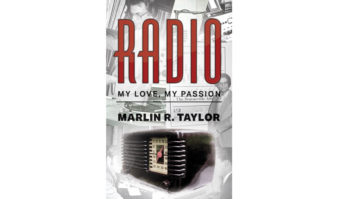(click thumbnail)Technical Broadcast Manager Craig James works ‘in the vault.’When XM Canada received the green light from the Canadian government to begin broadcasting, Iain Grant, manager of broadcast operations, used his hybrid computer/radio background to develop the facility design from the on-air talent’s standpoint, thinking about optimum workflow and how to create great radio.
This led to some innovations and a bit of thinking out of the box.
“Working with Tyler Everitt of Pippin Technical, a signal flow based on computer networking was developed, and Axia was selected to provide control surfaces and routing,” said Grant.
What evolved is one of the largest Axia installations in North America. XM Canada has two main talk studios, five control surfaces for voice tracks and music mixes, one music production studio and 14 workstations. It produces 13 channels of radio.
A staff of 30 announcers, producers and technicians keeps things humming. Production is done with ProTools and Adobe Audition. Newsroom software is from KLZ.
The project was approved on Sept. 15, 2007, with the expectation that it would be on air in time for the Christmas buying season. Axia pre-programmed the control surfaces before shipping, and Pippin Technical was able to complete installation in about three days.
(click thumbnail)The facility boasts one of the largest Axia installations in North America.
XM Canada’s Toronto-based headquarters are in a renovated bank building, and both of the vaults were preserved. The 10 racks for the TOC are in one of the vaults.
Grant recalled some apprehension that contractors might not be able to cut through the walls to run conduits. “Those fears were unfounded, and we have a functional but tight rack room,” he said.
He said much of the magic for a great Axia installation lies in shedding the traditional copper wire model and adopting the networking model. “Once you do that, you’re only limited by your imagination.”
He said it is relatively easy to access Pathfinder, the software that runs Axia. He uses Visual Basic for his software projects; his most recent effort is an application that makes the meter display from the bridge of a control surface visible on a video monitor in the XM Canada lobby.
(click thumbnail)XM Canada occupies what had been a bank.
Other projects involve writing code to enable Pathfinder to unlock studio doors at 9 a.m., and custom routing for on-air lights and muting. Software panels have been developed to control the Telos Zephyrs and autodial ISDN remotely.
The networking model permits spontaneous and unorthodox applications, said Grant.
“Everything is on RJ-45 connectors, so once we pulled a control surface out of the desk and set it up outside for a live remote,” he said. It also enables him to take care of many problems from home, saving many weekend and late night trips to the studio to deal with minor issues.
XM Canada connects with Washington for satellite uplinks and accessing the Dalet music inventory, as well as confidence monitoring. The system uses leased DS3 lines and Harris Intraplex units. Control channels on the Intraplex are used for contact closures and sending PAD data.













